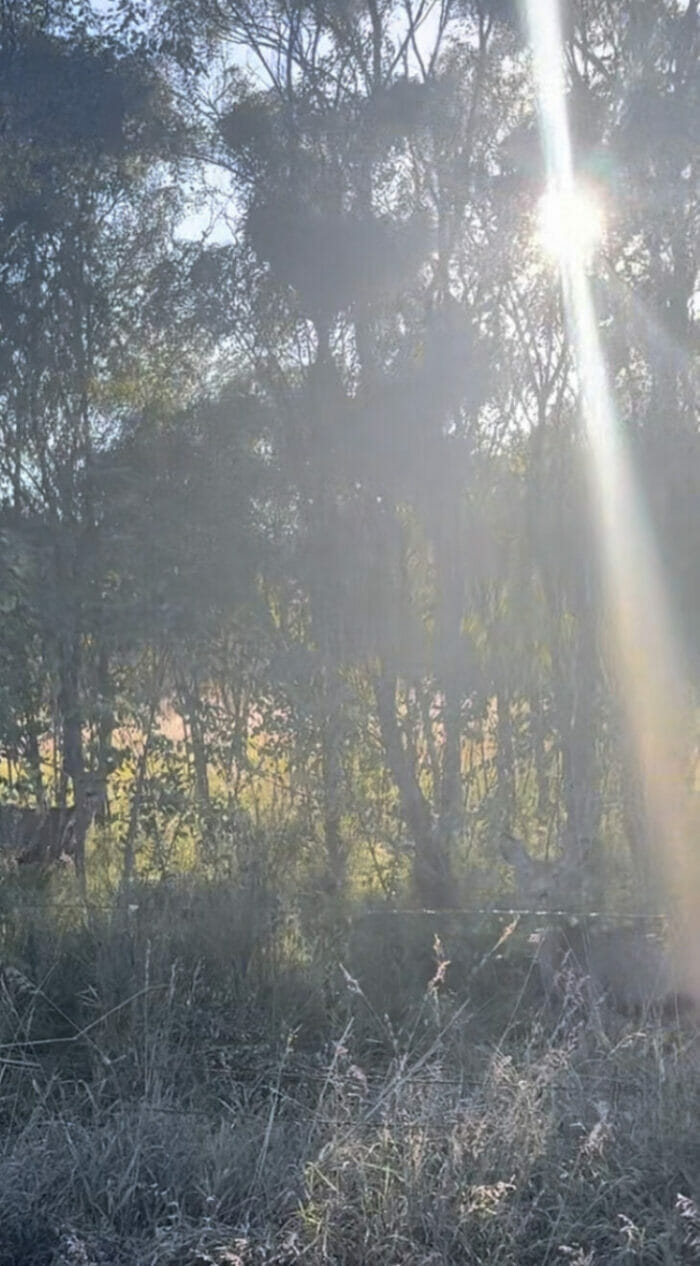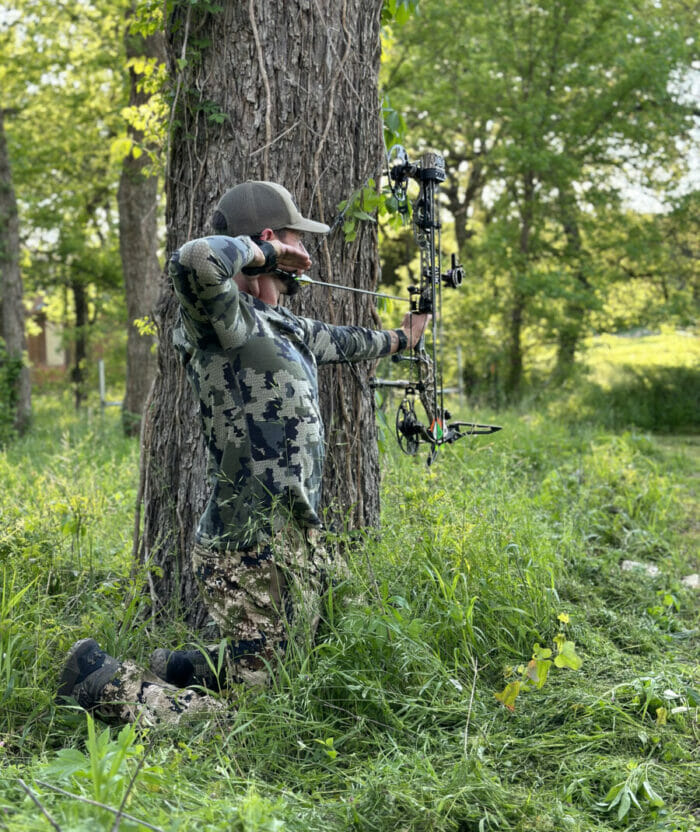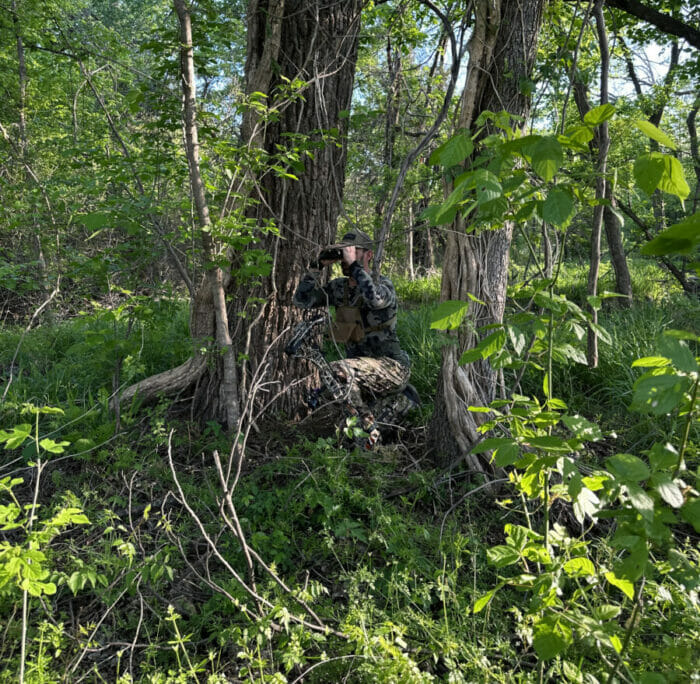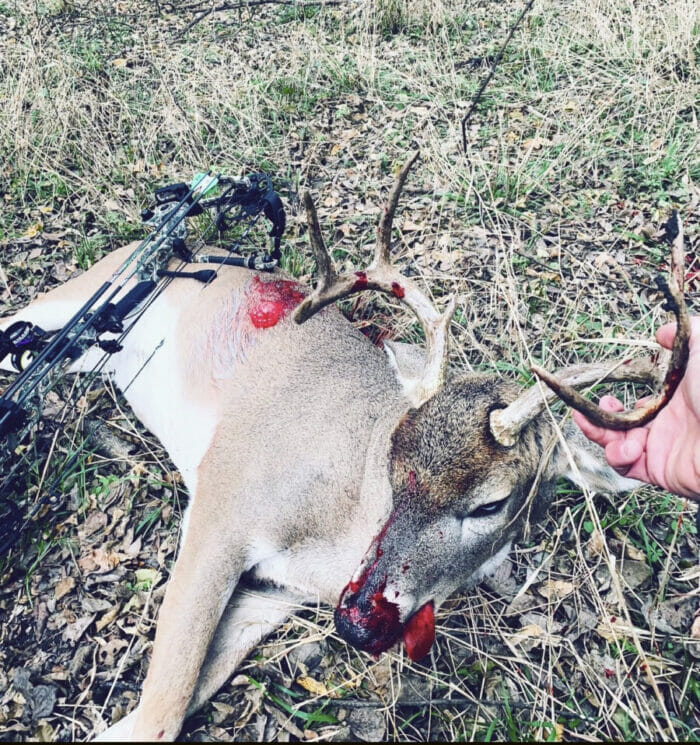Bow Hunting Whitetail from the Ground
There are many things to consider when choosing the correct bow-hunting setup. Where am I hunting? Which way is the wind blowing? What time of year is it? What can I expect the deer to be doing at this location? The list goes on, and if you’re anything like me, you’ll probably second guess yourself half of the time and leave the woods with more almost success stories than successful ones. But that’s the beauty of bow hunting. Nothing is guaranteed, and each decision you make can be the determining factor for having a successful hunt or not.
Before we get into setups, let’s start with bow hunting as a sport. If you’re new or considering getting into bow hunting, it’s essential to understand that it is challenging, and the journey will take you as far as you’re willing to let it. It requires great discipline, mental fortitude, preparation, and patience. Many who have tried have given up, and if you go down this road, it’s entirely possible the same thoughts will cross your mind at some point. Whether it’s just giving up for the season or putting your bow up for sale, it doesn’t matter. When that time comes – don’t give up. Whatever it takes, stick with it. The more you try, the more you learn and the more encounters you have. If you work on continual macro and micro improvements, stay determined, and never give up, you will be successful. Each step forward will open new opportunities, which ultimately keeps us coming back for more, time and time again.
Alright, so let’s dive into setups. Whether you are new to bow hunting or an expert bow hunter, an important question you either need or have asked yourself is: Which form should I use? There are two main tactics here – an aerial approach, such as tree stands or saddle hunting, or a ground approach using blind or still hunting. Any path you choose will have its advantages and disadvantages, and one tactic may not be your best option in every scenario. Some will require additional gear, while others maintain a minimal approach, but you’ll understand what works best for you over time. It’s also essential to have experience with different setups to use them as tools for success in a given scenario.
If you’ve been bow hunting for a while, you’ve probably developed your own hunting style. Every hunter is different, and if you ask a few experienced hunters why they chose a particular setup, you would probably get a few different answers, and rightfully so. There is no wrong answer. The main thing is – what keeps you coming back for more and having fun.
For me, that answer is pretty straightforward- it’s ground hunting. Ground hunting is one of the most straightforward concepts, yet arguably the most challenging. This is partly because I spend most of my time hunting public land, and hauling in a bunch of equipment can lead to burnout quickly. Still, I believe ground hunting adds an element of adrenaline overload that I haven’t experienced in other setups. If you have never tried or have never been successful with ground hunting, hopefully, this article gives you enough motivation and tools to give it a shot. Let’s walk through a few tips to help you succeed, starting with the most obvious obstacle….avoiding being seen or spotted.
Being Spotted
Avoiding visual detection is why some consider ground hunting more challenging than other setups. There is no easy way around it. You are in their field of vision and operating within the same limits as most predators. And although it may seem impossible to do when you start, it can be done. Without breaking down every scenario, here are a few suggestions to help you avoid detection.
Choosing the Right Cover
Although it may feel uncomfortable at first, setting up in high-cover areas leads to greater success. I wouldn’t say I like setting up directly on the edge or in an open space. I want to have medium cover around me, such as taller grass or shrubs, and at least a couple of big trees to either set up in front of or behind. If I am closing in on a bedding or high stem count area, I may decide to set up deep in thick cover. In doing so, I may not be able to see everything around me, but if I have clearance to draw my bow and adjust my shot, I can make it work. It’s a good idea to have some cover behind you, whether a large tree or thick brush, and some form of cover in front of you where you expect the deer to come from. You may find you may only have two or three clear shooting lanes, and sometimes you may only have one. And although this could seem counterproductive, it could increase your shot opportunity.
Using the Sun
During a morning hunt, if the wind allows, I like to set up the west side of taller trees, larger hills, or brush so I have an extended period in the shade, putting me in a better position during prime shooting time. An easy way to remember this is to avoid areas where the sun acts as a giant spotlight on your every movement. You can also use the sun as another layer of defense. If you set up where the deer will be walking toward you with the sun in their eyes, they will have a more challenging time noticing smaller movements. Just remember…this goes both ways. Make sure you’re not facing directly East for a morning hunt, and so on.
Clearing a spot
Once you find your spot, take a couple of minutes and clear any leaves or debris from the ground around you. A tactic you can use while clearing the area is to use a grunt tube and make subtle grunts as you make a clearing.
Trial and Error
Some of my favorite moments are being within 60 yards of a deer I don’t want to shoot. Whether in a tree or on the ground, it’s good to use these opportunities to learn what you can and can’t get away with. Practice your draw. Know your wind. See how the deer react and when they bust you and learn from that. Understanding which movements will and will not work through executing your typical shot sequence will give you the upper hand when it matters. This takes us to our next main tip – knowing when to draw.
Knowing When to Draw
When hunting from the ground you have a shorter window of shot opportunity. You have a completely different perspective than you do while in a tree. If you have never experienced the difference, next time you are practicing from a tree, take a few shots at your target. After you have made your observations and get dialed in, drop down…this time taking shots from the ground. Take note of the perspective changes. Everything looks different, so relying on additional senses is one way you can get additional lead time on your target.
Staying Ready
In a perfect scenario, you could have a few minutes to prepare, have an ideal screening cover to adjust, and draw your bow to make the perfect shot. But in my experience, those experiences are pretty rare. Most opportunities present themselves just as quickly as they pass by you. Rely on your ears, eyes, and nose to give you cues to advance your readiness. Another great way to stay ready is to use a bow stand. I have a couple of Mathews bows, and the bow stand attachment is an excellent purchase. But it’s not a necessity. You’ll be in good shape if you can quickly access your bow with minimal movement.
Glassing
Glassing could be one of the most underrated tools, in my opinion, but from the ground, it’s a crucial element. I never enter the woods without a good pair of binoculars. I like a 10×42 setup that allows me to see everything I need to see and maintain a good picture without picking up the subtle shaking when scanning the layout. As with most things, find what works for you and try to glass periodically through your set. (Of course, when you are glassing, ensure you are in good cover and not making significant movements – back to being seen). Break the area around you into grids and move slowly between each grid checkpoint. You never know what you might end up seeing.
The Ultimate Rush
Challenges aside, you can’t beat the experiences you gain from ground hunting. Even if you don’t harvest a monster buck, an encounter with a doe can be overwhelming. Imagine this for a moment. You wake up early, pack your gear, make some coffee, make the drive and hike in to your hunting setup. You have a tree stand already set and waiting. You’re in your stand 30 minutes before shooting light and everything is going to plan. Dawn breaks and you start ranging different areas around you before any of the action starts. The air is warming up, birds start singing and just like that – you see your target buck. He’s 70 yards out and walking your way. As he gets closer, you check your wind and look for other deer in the area. You have a clear view of everything around you. By this time, you’ve already grabbed your bow, nocked an arrow, and your heart rate is shooting through the roof. He continues coming your way. Eventually, he gets close enough and you make the decision to draw your bow. Time sits still and he inches closer, none the wiser of what awaits him. Your arms are already weak 10 seconds in. When he finally gets into range, you go through your shot sequence, check everything twice, and when the time is right, you throw out a “meh” and….thwack! Perfect shot. You watch him run off about 60 yards and drop to the ground. After 20 minutes or so, you decide to climb down out of your tree stand and head towards your kill. As you approach, for the first time, you see him up close and personal. For the first time, you realize just how magnificent this buck really is, and in that moment, another wave of adrenaline and emotion overwhelms you. It’s as if you are seeing this buck for the first time. Exciting, right?”
Now, imagine the same scenario, but this time you don’t have time to set up a tree stand, so you decide to hunt from the ground. You find some good cover and decide to set up shop. You realize that you only have a couple of small windows you can shoot through, but based on the travel patterns of the deer, you feel confident in your setup. This time, everything happens the same way, but you don’t see the buck coming your way from 70 yards out. Instead, you hear a twig break in the distance. Your senses go into overdrive, and it seems the only way you can hear is by holding your breath. You can’t see him and can’t quite hear him walking, but suddenly you get the overwhelming smell of a buck in the area. You grab your bow and ready an arrow. Minutes go by that seem like forever. You scan the area around you thoroughly but still see nothing. Then finally, you see movement. He is 40 yards out and headed directly toward you quickly. His head is bobbing up and down, back and forth, and you feel a sense of panic overwhelm your body. Can he see or smell me? Do you think he will continue walking this way? What if he never walks past my shooting windows? When will I be able to draw? Everything is happening so fast, and before you know it, you’ve already made the decision to draw your bow. He continues getting closer, close enough that now you can see his eyes and hear every subtle grunt. As he moves closer, he seems to be looking directly at you, however, he doesn’t run away. Adrenaline overload is in full effect, and you’ve been holding the draw for over a minute now. He inches closer and stops just outside your shooting window, looking around and observing the area. Panic sets in even further, and your arms are now numb. Then, as if by some miracle, he decides to take two more steps. Thwack! You don’t know exactly where he fell, but you heard a crash in the distance. Once you find the blood trail, new emotions begin to set in. Eventually, you see him lying on the ground 20 yards away. However, this time, you already had your personal encounter with him. The only difference is that this time he’s not breathing. It’s a truly intimate experience.
Conclusion
Bow hunting whitetail from the ground is no easy task, but hopefully, these tips can get you thinking a little differently next time you enter the woods and give you an advantage. In later articles, we can break down additional topics such as wind, entry, calls, and more. All of which are important and can increase your odds of success. Just remember, there are a lot of factors working against you, and it may take some time before you’re successful, so don’t give up. The best way to learn is to get out there, experience it, learn from your failures, learn from your successes, learn from other hunters, and do better the next time. And remember…have fun! That is what it’s ultimately about. Good luck.
Scott Neal is a passionate bow hunter with 8 years of experience pursuing whitetail on public land and is currently preparing for a second season of DIY elk hunting. For Scott, hunting is a way of life that offers him the thrill of the chase and satisfaction of a successful hunt. Over the years, Scott has honed in on his credentials of bow hunting and has fostered a deep respect for animals in their environment. He enjoys the challenge of using his skills against the wily whitetail and elusive elk because it requires a constant pursuit of technique improvements. Scott doesn’t consider himself an expert. He is instead a lifelong student and is always eager to learn more about optimal hunting strategies and wild game movement.







